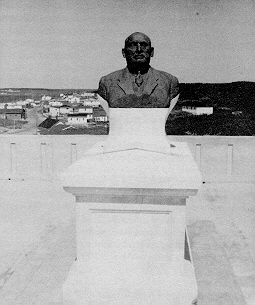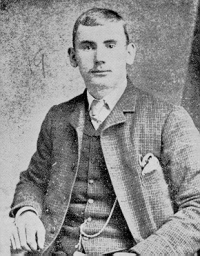
Mel Baker melbaker@mun.ca. Last modified October 3, 2001.
The Fishermen's Protective Union (FPU) and its President, William Ford Coaker, first chose St. John's as the headquarters for the Union Trading Company, which commenced business on May 1, 1912. By selling imported merchandise directly to the Union members and Councils and supplying the various FPU cash stores in the outports along the northeast coast, Coaker hoped to lessen the economic dependency of fishermen on the St. John's merchants. To achieve this goal, he also planned to establish a Union-owned Export Company which would purchase fish from fishermen and sell it in world markets. Through such means, Coaker intended to eliminate the existing credit system which perpetually held fishermen in servitude and debt to St. John's merchants, who strongly opposed both the Union and its business activities.

The Union Trading company's premises were located in the heart of mercantile St. John's on the southside of Water Street. By November, 1913 the Company's operations - on leased land formerly occupied by Crosbie & Co. - consisted of a dry goods shop, provision store, and a clothing factory, which manufactured much of the clothing sold by the Union's cash stores. (1) However, the Company's location in the capital city presented several obstacles to the expansion of business operations envisaged by Coaker. The first was the unwillingness of city merchants to allow Coaker to acquire larger harbour front space for the Trading Company as well as for the proposed Export Company. His enquiries received the quick rebuff that land was not for sale - to him. (2) St. John's also had the disadvantage of having property taxation, which, Coaker claimed, placed unnecessary financial burdens on the Trading Company. Outside St. John's there was no property tax. (3) Again, St. John's was far removed from the northern districts where the Union's members lived; consequently, it was a long and dangerous trip in the stormy months of October and November for Union ships sailing to St. john's to sell their fish and purchase supplies. (4) Finally, a more central location in the northern districts would make it easier for Union delegates to attend the annual conventions of the FPU; it would also bring the FPU and its businesses physically and spiritually closer to where the Union originated in 1908 and where its strongest support lay.
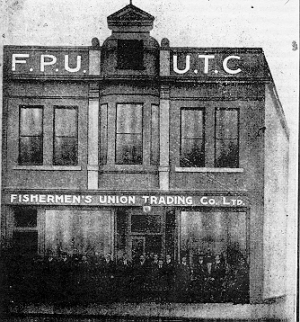
As early as 1912 Coaker had considered relocating the headquarters of the Union and the Trading Company in some northern outport such as Catalina. His first preference was the community of Trinity, but mercantile opposition there forced him to look for land at Catalina. (5) Several sites in Catalina were examined, but rejected either because the water was too shallow or he could not secure all the land required. Finally, he decided upon an unoccupied hilly and rocky site in the Northwest Arm of Catalina harbour, since it was both available and had a deep water front able to accommodate steamers up to 4000 or 5000 tons. Coaker purchased this land in 1915 for approximately $500.00 from the Catalina firm of McCormack and Walsh, which in 1877 had bought the land from the heirs of a Scottish Thompson family. In the early 1800s the Thompsons had operated a mercantile firm on this site. (6) Near this land there was a river which could be harnessed to provide electric power both for the businesses Coaker would establish and for the houses that would be built for his employees. Another reason Coaker chose Catalina was its harbour was ice-free and large enough to accommodate a hundred or more vessels at one time at anchorage. (7)
In 1914 Coaker received approval from the delegates to the FPU Annual Convention held at Catalina to establish the Export Company. At the 1915 Convention held in St. John's delegates approved Coaker's proposal to establish the Trading Company's headquarters on the land he had purchased earlier in the year. They also advised Coaker to use Union funds either as loans or as investments in shares in the Trading Company to construct the proposed premises. During the winter of 1916 the Company acquired $5,000.00 of timber from the forests in nearby Bonavista and Trinity Bays and commenced construction in May, 1916 under the supervision of Bernard James Miller, a Champneys native who had moved to St. John's and become a contractor-builder. When construction began, the Trading Company had very little money for building, but over the next few years it successfully raised sufficient money from FPU members who bought new stock in the Trading Company and other Union companies. Fortunately, 1916, 1917, and 1918 were excellent years in the fishery, and the Trading Company was able to use its profits from general business to pay part of the cost. Labour costs were also kept down apparently by Catalina Unionists who provided some free work in return for shares in the companies. (8)
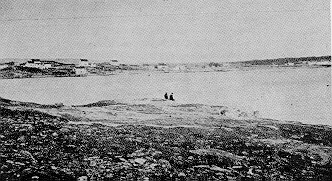
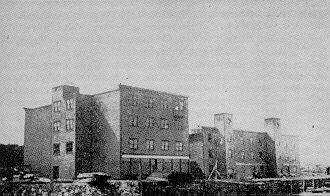
The Trading Company completed its premises in early 1918 and transferred its headquarters from St. John's in February of that year. The Trading Company rented part of the premises to the Export Company. (9) The main buildings consisted of a fish store, a salt store, and a dry goods departmental shop - all equipped with elevators. The fish store was a three-storey building with the ground floor used as a provision department and the other levels as areas for storing and packing fish. An electric fish drier was installed in the store capable of covering 150 quintals of fish at once; there were also electric blowers, fans, and heaters, Coaker later noted, that transferred "damp fish into hard dry in twenty minutes." The roof of the store of the store and that of the cooperage, which was located in the top floor of the three-storey salt store, were used as flakes to dry fish. Altogether, about 300 quintals of fish could be spread there. According to J. H. Scammell, writing in the FPU's Advocate on December 22, 1917, the department store was an impressive-looking four-storey building.
The front of the lower storey facing the water is of glass, as is also the front of the second flat entering from the street. The lower flat will be used as a retail grocery store and hardware department. With the exception of the space taken by the general and private offices, the whole of this will be devoted to dry goods. It will contain several departments. The offices occupy the front half of the top flat. They are nicely finished with panelling and hard pine moulding. The general manager's office has a fine floor of white tiling. From the windows of this office there is a magnificent view of the town and surrounding country and ocean . . .
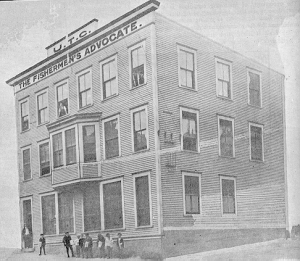
Other facilities located on the premises were a seal oil plant, a machine shop, a forge, garages, stables, coal sheds, a cold-storage plant, and a boiler house which was used to heat the premises. A shipyard owned by the Union Shipbuilding Company was constructed near these premises to build vessels for both the Trading and Export Companies. (10)
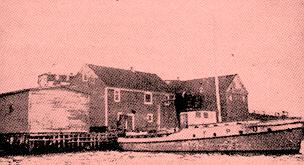
The establishment of the Union Electric Light and Power Company was an integral part of the community being organized by Coaker. After receiving its act of incorporation in May, 1916 from the legislature, the Company through its president, William Coaker, appealed to the FPU rank and file for financial support. On behalf of its members, the FPU took 750 of the 3160 shares issued, at $10 per share. Residents in Bonavista and Trinity Bays also invested in the Company with Dr. A. P. McKay of Catalina holding 200 shares. The largest shareholder was the Halifax-based Nova Scotia Trust, which owned 1000 shares in trust for the Electric Company. When the Company began making a profit in the 1920s, it bought these shares back. (11) The Company commenced operations with a plan to harness a river which flowed into the community near the Trading Company premises from several ponds near Catalina. In 1917 it installed a 400 horsepower generator in a station made of stone and concrete at the mouth of this river. After an expenditure of $70,000,00, on February 14, 1918 the Electric Company began providing electricity for the shipyard, fish store, and the department store and for houses in both Port Union and Catalina. In 1920 the Company installed a second 400 horsepower generator at the Port Union station to provide the necessary electricity for the nearby communities of Elliston and Bonavista. (12)

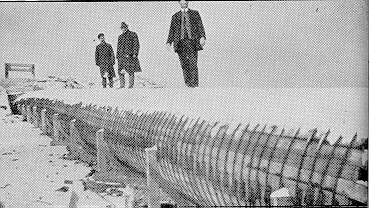
Coaker also built a hotel to provide accommodation both for visitors to his new town, and for delegates who would be attending the annual FPU conventions which, starting in 1918, were held in Port Union. Port Union also had a bakery, a wood-working factory to make doors and sashes for houses and buildings, a small plant to manufacture temperance drinks, a movie-theatre, and two rows of double houses for employees of the Union companies. He had the government establish several public buildings, such as a customs house and postal and telegraph offices, and make Port Union a regular port of call for its coastal steamer service. In 1917 the government built a spur railway from Bonavista Branch Line at the Catalina station to connect with his Port Union premises. Port Union also got its own school and a community health nurse, brought by Coaker from England. Moreover, the FPU constructed a convention centre, known as "Congress Hall", at a cost of $25,000.00 using funds provided by the Union, the Trading Company employees, and friends of the FPU. Built on a hill overlooking the Trading Company premises, the Hall, according to one contemporary, was lighted up "at night with hundreds of electric lights, inside and outside, [and] it can be seen for miles at sea," thus serving as a beacon of unity for fishermen. Near the Hall Coaker erected an Anglican Church to serve as a memorial to the Coaker recruits, who enlisted at Coaker's request in the Royal Newfoundland Regiment. Union members answered Coaker's appeal for building funds by providing $25,000.00 for the construction of the Church of "The Holy Martyrs," completed in 1921. Coaker decided to have an Anglican building because both the Methodist and Roman Catholic Churches at Catalina, were will situated to serve Port Union members of these two denominations. Finally, Union members raised money for the construction of a residence for Coaker; this was simply called the "Bungalow" because of its particular physical design. (13)
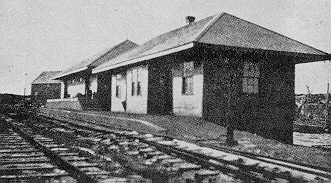
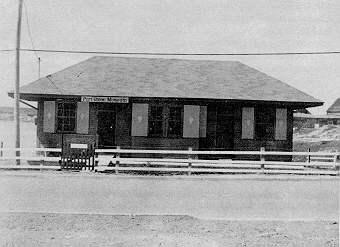
The new town of Port Union by 1921 included both residents of what was formerly the Port Union section of Catalina, and people who had moved to Port Union from nearby communities. In 1921 Port Union had a population of 532 residents, with 51.8% of the heads of family, according to the 1921 census returns for the town, listing the Port Union section of what was once Catalina as their place of birth. Overwhelmingly, these natives were either Roman Catholic or Methodists and were mainly fishermen involved in the local shore fishery. (14) The surnames of some of these natives were McNamara, Penney, Sutton, Lodge, Norman, Russell, and Diamond. Newcomers to Port Union came from Union outports in nearby Notre Dame, Bonavista, and Trinity Bays and were mainly either Anglicans or Methodists. Altogether, in 1921 Methodists comprised 59.4% of Port Union's total population, Anglicans were 26.3%, and Roman Catholics formed the remaining 14.3% (See Appendix A). To work in the shipyard, for instance, men and their families came from the following outports: Bonaventure (Charles King); Greenspond (Herbert Burry and Edgar Gibbons); Little Bay Islands (James Jones); Lumsden (Kenneth Gibbons); Newman's Cove (William Cool); Port Rexton (Joseph Bailey and Edmund Butler); Wesleyville (Peter Carter); and Wimble Bight (Abraham Goodyear). To work in the cooperage William White moved from Bonavista, while Michael Noble brought his family from Nippers Harbour to be employed as a blacksmith. (15) Altogether, in 1909 Coaker noted that there were about 400 persons in the Catalina-Port Union area securing employment from various Union operations in Port Union. (16)
Coaker found his Port Union much to his liking, because of the concentration of
Union businesses in one community the Union had established. His biographer, Joseph
R. Smallwood, noted in 1927 that he had seen "greater happiness than at any time in his
life." Port Union was a hectic and informal work atmosphere for the FPU President and
General Manager of the Union's companies. According to Smallwood, his greatest joy was
to
"go about in an old suit, without collar or tie, and personally supervise the most minute detail of the endless ramifications of the town's activities. One minute he is out on one of the wharves giving a help; another he is in the cooperage, then you will see him in the interior of the great fish stores inspecting the packing of the fish in drums, or seeing how his experiment of drying fish by electric heat is getting along... His work is done where he happens to be standing at the moment." (17)
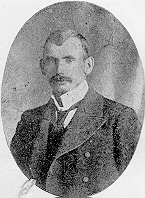
Every year over 200 delegates attended the annual conventions of the FPU held at Port Union, which became the symbol of their organizational, commercial, and political goals first nurtured at the Union's inaugural meeting on November 3, 1908 at Herring Neck. Their Port Union represented a veritable departure by outport fishermen of the island's northeast coast to make a sharp break from the influence and control by the St. John's Water Street merchants of the Newfoundland economy and society. The success of the building of Port Union was a memorial to the determination of Coaker and his supports and represented a unique development not only in Newfoundland history, but also in the social and commercial history of twentieth century Canada.
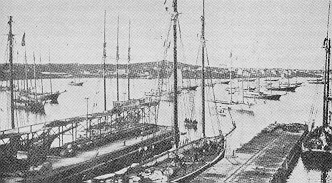

1. William Ford Coaker, ed., Twenty Years of the Fishermen's
Protective Union of
Newfoundland (St. John's, 1930, 1984), 68.
2. William Ford Coaker, Past, Present and Future (St. John's
1932), "Article 16,
November 2, 1932."
3. Coaker, Twenty Years, 46.
4. John Dutton, Don Matthews, Derek McDonald, Frank Meaney, Don Noseworthy,
and Hans Wasmeier, "A Study of the Port Union Power Plant" (St. John's, 1979),
extract from Mail and Advocate, August 12, 1916. Future reference to the Mail and
Advocate are taken from a newspaper appendix in Dutton et al.
5. John Feltham, "The Development of the FPU in Newfoundland, 1908-1923" (M.A.
thesis, Memorial University, 1959), p. 91.
6. Mail and Advocate, December 22, 1916; Coaker, Past,
Present, and Future; and
Coaker, Twenty Years, (97-8).
7. Mail and Advocate, August 12, 1916, December 22, 1917.
8. Ibid., December 22, 1917. See also Coaker, Twenty
Years, 105-09, and Past,
Present and Future.
9. Coaker, Twenty Years, 109, 125-28.
10. Mail and Advocate, December 22, 1917 and Coaker, Past, Present and Future.
11. Dutton et al, "A Study of the Port Union Power Plant," 29-33.
12. Coaker, Twenty Years, 134: Mail and Advocate, February 15,
1918.
13. J. R. Smallwood, "Coaker - Next to Carson, Newfoundland's Greatest Son," in
Newfoundland Miscellany (St. John's, 1978), 58-9; Coaker, Past,
Present and
Future; and Coaker, Twenty Years, 171-72, 203.
14. Census of Newfoundland, 1911, 1921.
15. Provincial Archives of Newfoundland and Labrador, A-7-2, Census of
Newfoundland, Trinity, Sections 1-3, Port Union, 74-91.
16. Coaker, Twenty Years, 192.
17. Smallwood, "Coaker," 59.
Church of Roman Salvation
England Catholics Methodists Army Others Total
1911 401 145 449 21 -- 1,016
1921 317 36 247 29 22 651
Church of Roman
England Catholics Methodists Total
1921 140 76 316 532
Church of Roman
England Catholics Methodists Total
1921 26.3 14.3 59.5 532
Source: Census of Newfoundland, 1911, 1921.
